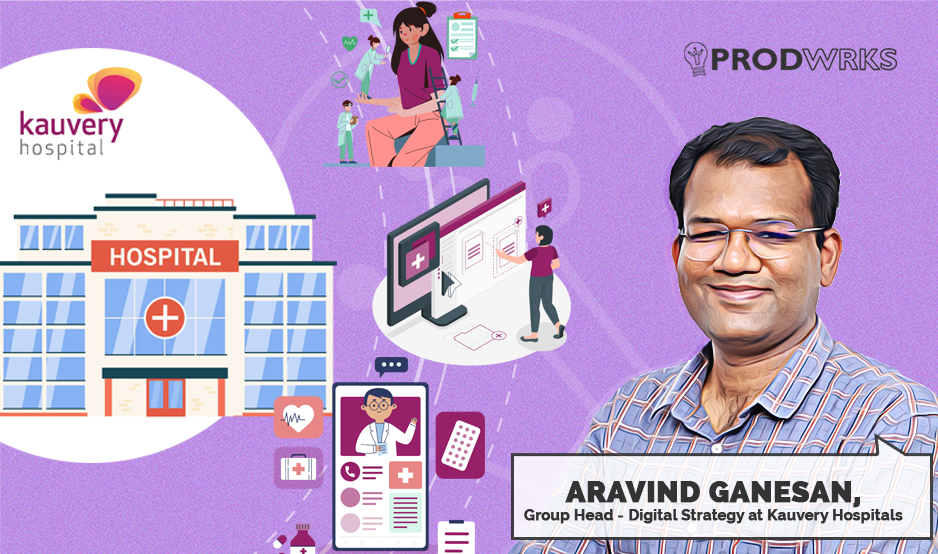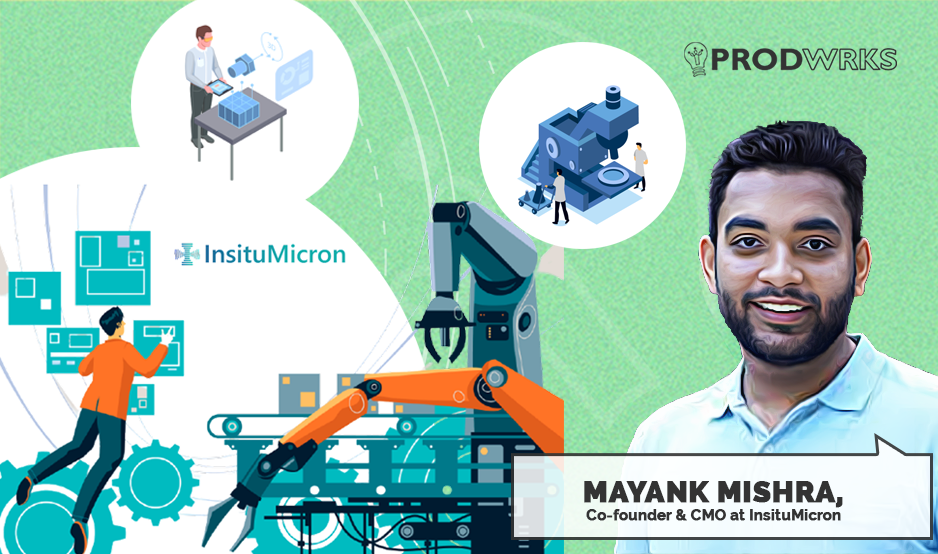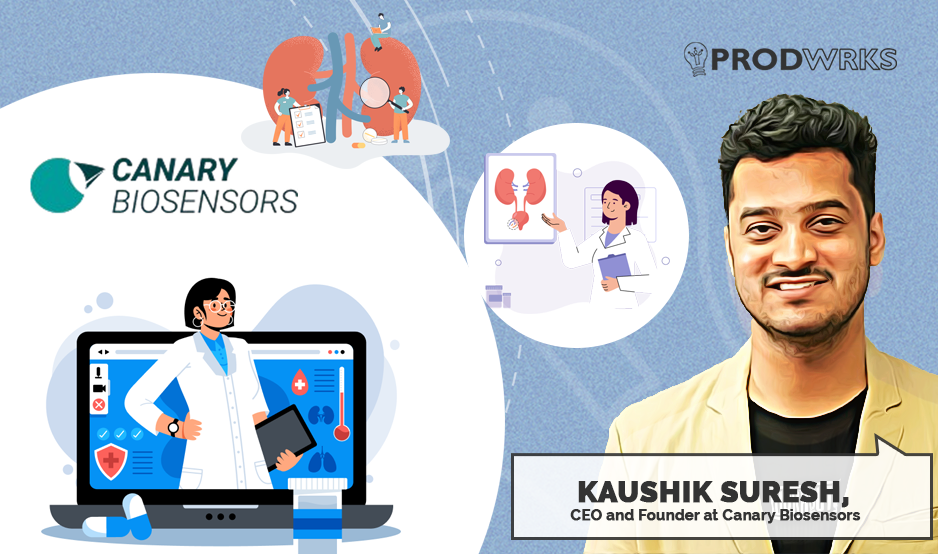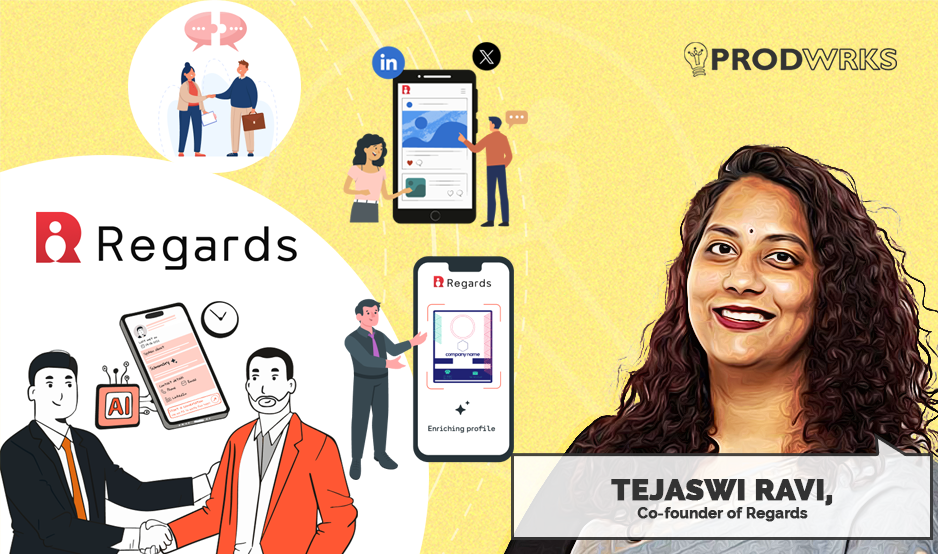
The Indian healthcare system is a study in contrasts – advanced medical tech on one side, and overstretched systems on the other. Patients arrive distressed, seeking care, while clinicians and staff navigate demanding schedules, administrative burdens, and the sheer emotional weight of their profession.
Aravind Ganesan, Group Head of Digital Strategy at Kauvery Hospitals – a 2,500-bed multispecialty group across Tamil Nadu and Bangalore – is an expert when it comes to leveraging digital innovation to navigate this high-stakes healthcare environment and improve patient experience.
"I could see that there's a lot of potential for digital in healthcare," Aravind shares. More than just potential, it offers him purpose. "It is a meaningful job because you can really make a difference. Nurses and doctors are overworked, and patients are usually distressed. Most of the opportunities in healthcare and my goals are about bringing efficiencies through tech."
With over 18 years of experience across healthcare and insurance in the US and India, Aravind isn’t just a technologist implementing systems to increase efficiency. He’s working to humanize it, aligning digital innovation with the real-world needs of all healthcare stakeholders – patients, caretakers, and hospital staff.
In this feature, he shares hard-won lessons from building a truly patient-centric digital ecosystem at Kauvery, including their flagship app, Kauvery Kare. Aravind’s story is a candid look at what it really takes to not just launch apps or adopt AI, but to understand people, untangle operations, and drive lasting change in an industry where tech adoption is often the hardest step, yet most essential.
Redefining Patient Experience
Many digital transformation efforts start with a shiny front-end application. Aravind initially came to Kauvery with a similar mandate: to build an app for Kauvery’s customers. However, the reality of healthcare delivery quickly prompted a deeper realization.
“I initially came to build an app. But for the app to work, the backend functionalities and hospital operations should be aligned. Even to deliver a simple digital diagnostic reports via an app, you need someone to type the reports and upload them.” Aravind points out.
Aravind quickly realized that his role is not just to build an app or tech, but to improve the patient experience by digitally enhancing the efficiency of the hospital operations.
"To provide a good patient experience, the work is not only at the experience layer. The hospital's entire backend value chain has to be digitized and work towards it. It's a full stack work in a physical world."
The Three Pillars of Patient Experience
For Aravind, “patient experience” transcends a slick user interface. It’s a holistic concept built on three interconnected pillars, moving progressively from basic needs to proactive care:
1. Convenience
Providing necessary information and enabling required actions seamlessly at the user’s fingertips with minimal operational latency. This foundational layer enabled via the Kauvery Kare app, focuses on seamless access and immediate actions like booking appointments, viewing reports, finding information without friction.
2. Insight
Beyond raw data, patients expect context and understanding. “The app should not simply say that had a change in blood sugar level. We must also provide insight as to what it might mean,” Aravind explains. This requires synthesizing data into meaningful knowledge.
3. Intelligence (Next Best Action)
This is the predictive/proactive layer. “Based on whatever actions taken and the insights derived, this is the next best thing that we (healthcare provider) need to do for the patient,” Aravind describes. This layer leverages AI and ML to anticipate needs and guide the patient towards necessary interventions, ensuring they stay engaged with Kauvery.
Aravind conceptualizes this as a “virtuous loop”: Information → Insights → Intelligence → New Information → New Insights → New Intelligence.
"This whole loop has to keep on happening," Aravind emphasizes. "Information, insights, intelligence. It is an evolutionary path."
Kauvery's Digital Ecosystem: Initiatives in Motion
Guided by the Convenience-Insight-Intelligence framework, Kauvery has rolled out a suite of digital + physical initiatives targeting various touchpoints:
1. Experience Layer (Convenience & Information)
a. Kauvery Kare App: The flagship patient app of Kauvery that facilitates appointment booking, document access, health checkup scheduling, and emergency ambulance requests (work in progress), and more.
b. WhatsApp Chatbot: Recognizing that not all users (especially in Tier 2/3 cities or those less tech-savvy) will download an app, Kauvery mirrored key functionalities onto a chatbot, leveraging WhatsApp’s massive native user base.
2. Operational Integration (Enabling the Experience)
a. Personalized EMR: To facilitate digital prescriptions and make reports readily available, Kauvery has implemented personalized Electronic Medical Records that allows healthcare providers to tailor the EMR to individual patient needs. While enabling structured data capture, it also minimizes friction for doctors and drives adoption.
b. Post-Discharge Follow-up Systems: Kauvery’s digital platforms also support care managers who proactively call discharged patients, ensuring continuity of care beyond the hospital walls to ensure they are “not just getting cured, but also getting well”.
3. Data and Insights Layer
a. CRM & Data Lake: A central CRM tracks the entire patient’s journey, while a comprehensive data lake aggregates interaction data, clinical information, operational metrics, etc., creating a single source of truth.
b. Power BI & Analytics: Tools are used to generate insights from the data lake, informing operational decisions and understanding patient behaviour.
4. Intelligence Layer (The Future, Being Built Now)
a. Kauvery GPT: Leveraging generative AI (specifically, a ChatGPT-like model trained on Kauvery’s own data and hosted in-house), to enable natural language queries for hospital staff, aiming to drastically reduce the “time to insights.”
b. AI Powered Patient Interactions: Plans are underway to integrate this AI capability into the EMR, patient apps, and WhatsApp bots to personalize patient interactions with the hospital systems and make it more accessible with natural language queries and prompts.
"What we have just done," Aravind summarizes, "is created a continuum of interactions which are all completely digital in nature, and we have a digital footprint of the patient for the whole journey. This is all coming into a single data lake, and the data lake, again, is driving the insights and intelligence layers."
Key Stakeholders and Problems
While patient-facing tools like the Kauvery Kare app and WhatsApp bot are designed for patients and their caretakers (with features like family management catering to the significant elderly patient base of Kauvery), their impact extends far beyond.
"It actually solves a lot of problem for our staff," Aravind notes. "Digitally automating tasks like appointment booking reduces the load on call centers and front desks. Moreover, the cost of using a software for a transaction or a task is almost zero. That is not the case with a human user. This efficiency drive is crucial in resource-constrained environments."
The core problems being solved with digital solutions are:
- Friction Reduction: Streamlining administrative tasks (appointments, documentation access, eventually pre-arrival formalities to reduce waiting times).
- Continuity & Insight: Providing patients (especially chronic ones) with a clear view of their journey and health trends within the app.
- Staff Efficiency: Freeing up hospital staff from repetitive tasks and to better allocate human resources to focus on care delivery and other complex issues.
Key stakeholders include:
- Patients: Seeking convenience, information, and hassle-free interactions.
- Caretakers: Managing health for family members (often elderly parents), needing access to information and alerts for fall detection (work in progress).
- Hospital Staff (Doctors, Nurses, Admin, Call Center): Benefiting from reduced administrative burden and potentially better access to integrated patient information.
User personas for patient-facing tech are primarily segmented by age and digital inclination. Younger demographics often prefer an app-first experience, while older patients favor physical interaction, making WhatsApp or caretaker access via the app more relevant. Features and functionalities like emergency support are prioritized for the latter group.
The App vs. WhatsApp Dilemma: Strategy and Trade-offs
"Getting an app to be downloaded is a very tough task. CAC [Customer Acquisition Cost] is very high," Aravind explains. "It's like creating a new brand altogether." With the bot, Kauvery taps into an existing massive user base of WhatsApp. "It's just another chat session. The cost of getting a new customer is much lower."
However, while WhatsApp offers reach and lowers initial friction, the Kauvery Kare app provides crucial advantages for long-term strategy. “Once you get people on the app, you get a very committed user. Whereas WhatsApp is more like a situationship,” Aravind jokes.
More importantly, the app allows for a controlled ecosystem and deeper integration.
Aravind says, "With the app, I can offer services that complement what is already there in the hospital. For instance, I can create a continuum of care by capturing medication adherence data or patient monitoring data on the app, that can be used in subsequent patient visits to the hospital. This whole closed-loop system is possible only via apps. An app should be seen as an extension of the hospital ecosystem to ensure that the experience seems seamless."
Moreover, Aravind’s initial hypothesis was that WhatsApp would be preferred in Tier 2/3 cities due to phone resource constraints, although app adoption has proven strong there too. However, he admits that there’s a greater emphasis on personal interaction in Tier 2/3 cities.
He says most healthcare decisions today often hinge on this crucial heuristic: impersonal digital interaction vs. personal human touch
"We have care managers calling directly and talking to patients [post-discharge] rather than putting an interaction on an app," Aravind explains, acknowledging a preference for human connection in Tier 2/3 cities.
Currently, Kauvery Kare has around 7,000 downloads. While adoption is growing steadily, Aravind acknowledges the need for more traction, driven by promotions or by adding valuable features like better emergency access.
Hard-Won Lessons for Healthcare Innovators
For product leaders venturing into healthcare technology, Aravind offers candid, invaluable advice born from helming digital strategy for Kauvery Hospitals.
1. Adoption is 80% of the Battle:
“Building the product is only 20% of the work,” he stresses. The real challenge lies in getting clinicians, staff, and patients to integrate the technology into their routines.
2. Deeply Understand Operations & Throughput:
“Everything is throughput in healthcare,” says Aravind. So, any tech solution must enhance efficiency, not hinder it. He illustrates an example of a poorly designed EMR system where typing patient notes could potentially increase a doctor’s consultation time. “But ideally your system has to be smart enough to cut that time. You must find a way for technology to work within existing healthcare systems to do that.”
3. Minimize distress before aiming for delight
“More often than not, patients do not want to be in a hospital and become your customer. So, your job is not to provide them fancy features. The job is to provide the convenience and make their entire experience very hassle-free,” Aravind stresses, highlighting the need to reduce non-care related burdens in the digital space.
4. Unlearn Assumption
Preconceived notions on tech tools, AI, or platforms, might be irrelevant in healthcare. But technologists often arrive with preferred tools and solutions. “We carry a hammer and are looking for a nail to hit,” he laughs. “You have to really unlearn and relearn everything.”
5. Feedback is Everywhere (and Intense): Be prepared for user feedback through any channel, even direct complaints to leadership. “Park your pride and emotions aside and listen properly,” advises Aravind. Staff interacting daily with patients – doctors, nurses, and admin staff – often have the best sense of what’s truly needed. “Usability is key… Don’t incorporate complicated user journeys. They’d always ask us to keep it simple.”
Aravind also highlights critical technical underpinnings often overlooked: robust Master Data Management, seamless Integration with Internal Systems, and reliable Integration with Third-Party Systems are non-negotiable foundations for any successful digital health initiative.
“Healthcare often requires bespoke solutions and deep integration, not off-the-shelf products.”
The Future is Pervasive AI
Looking ahead, Aravind’s vision is clear: Pervasive AI.
"My focus is essentially pervasive AI in all interactions and all touch points in a hospital. I see AI as an automation opportunity," he declares.
At the same time, he states firmly that the goal isn’t AI for AI’s sake, but to tangibly improve speed and efficiency. Especially to:
- Reduce Time-to-Execute: For transactional tasks (like appointment booking – aiming for <10 seconds), AI should drastically cut execution time.
- Reduce Time-to-Insights: For analytical functions, AI should accelerate the process of deriving meaningful insights from data.
"AI needs to increase the throughput and increase the speed of executing a particular transaction," Aravind asserts. For analysts, it means drastically reducing "time to insights." For transactional staff, it means cutting "time to execute the transaction."
Throughout Aravind’s interaction with ProdWrks, this overarching aim remains constant. “The systems are stressed, the physical manpower is stressed, and we have to use AI and digital tools to reduce the stress,” says Aravind.
He adds that their immediate goal today is driving self-service and optimizing operational costs. This is also evident in Kauvery Kare app’s North Star metric: What percentage of the OP appointments we get today is basically done on the app?
Aravind shared that in the near future, the focus may shift towards the app becoming a medium for growth. He muses, “Can we get 80 to 90% of our patients using digital media for booking appointments or even checking into the hospital?”
The Blueprint for Human-Centric Digital Health
For Aravind, healthcare is a domain ripe with challenges that demand continuous learning and innovative solutions.
Kauvery Hospitals’ digital journey under Aravind Ganesan’s leadership offers a compelling blueprint for healthcare innovation. It underscores that true transformation isn’t just about deploying the latest technology, but about deeply understanding the human and operational context it inhabits.
But he readily admits the journey involves “a lot of frustrations,” primarily because “it takes a lot of time to get something adopted and make users feel valuable about what we are doing.”
Yet, this is balanced by profound satisfaction. “You can work throughout your life (in healthcare) and there would still be enough problems to solve. Every day, there are problems for which I don’t have any answers, and that is the best place to be.”



